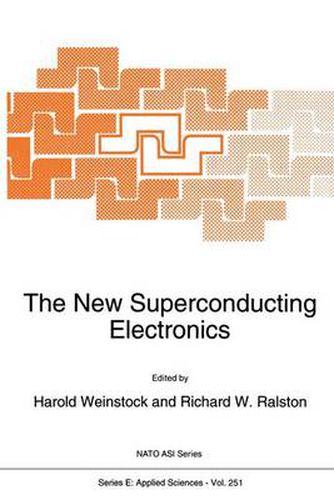Readings Newsletter
Become a Readings Member to make your shopping experience even easier.
Sign in or sign up for free!
You’re not far away from qualifying for FREE standard shipping within Australia
You’ve qualified for FREE standard shipping within Australia
The cart is loading…






This work provides a review of recent advances in all aspects of superconducting electronics, both for the traditional (4 K) liquid helium based (LTS) materials and the more recent ceramic (HTS) materials that can operate at higher temperatures in the range of liquid nitrogen (77 K). Special emphasis has been placed on the rapid progress over the past two years in the fabrication of thin-film structures which provide the potential for vastly improved passive elements in microwave circuitry and active components for signal processing and magnetic sensors. The fundamentals of superconducting and single-electron tunneling, as well as a detailed explanation of SQUID fundamentals, are presented. Current and projected applications of superconducting electronic and magnetic-sensing elements are discussed. The book concludes with four chapters devoted to new generations of analog-to-digital converters and digital signal processors. This information should prove valuable to scientists and engineers engaged in R&D on improved electromagnetic sensing and signal processing, the fabrication of thin-film components, and practical applications of rapidly emerging LTS and HTS superconducting technology.
$9.00 standard shipping within Australia
FREE standard shipping within Australia for orders over $100.00
Express & International shipping calculated at checkout
This work provides a review of recent advances in all aspects of superconducting electronics, both for the traditional (4 K) liquid helium based (LTS) materials and the more recent ceramic (HTS) materials that can operate at higher temperatures in the range of liquid nitrogen (77 K). Special emphasis has been placed on the rapid progress over the past two years in the fabrication of thin-film structures which provide the potential for vastly improved passive elements in microwave circuitry and active components for signal processing and magnetic sensors. The fundamentals of superconducting and single-electron tunneling, as well as a detailed explanation of SQUID fundamentals, are presented. Current and projected applications of superconducting electronic and magnetic-sensing elements are discussed. The book concludes with four chapters devoted to new generations of analog-to-digital converters and digital signal processors. This information should prove valuable to scientists and engineers engaged in R&D on improved electromagnetic sensing and signal processing, the fabrication of thin-film components, and practical applications of rapidly emerging LTS and HTS superconducting technology.